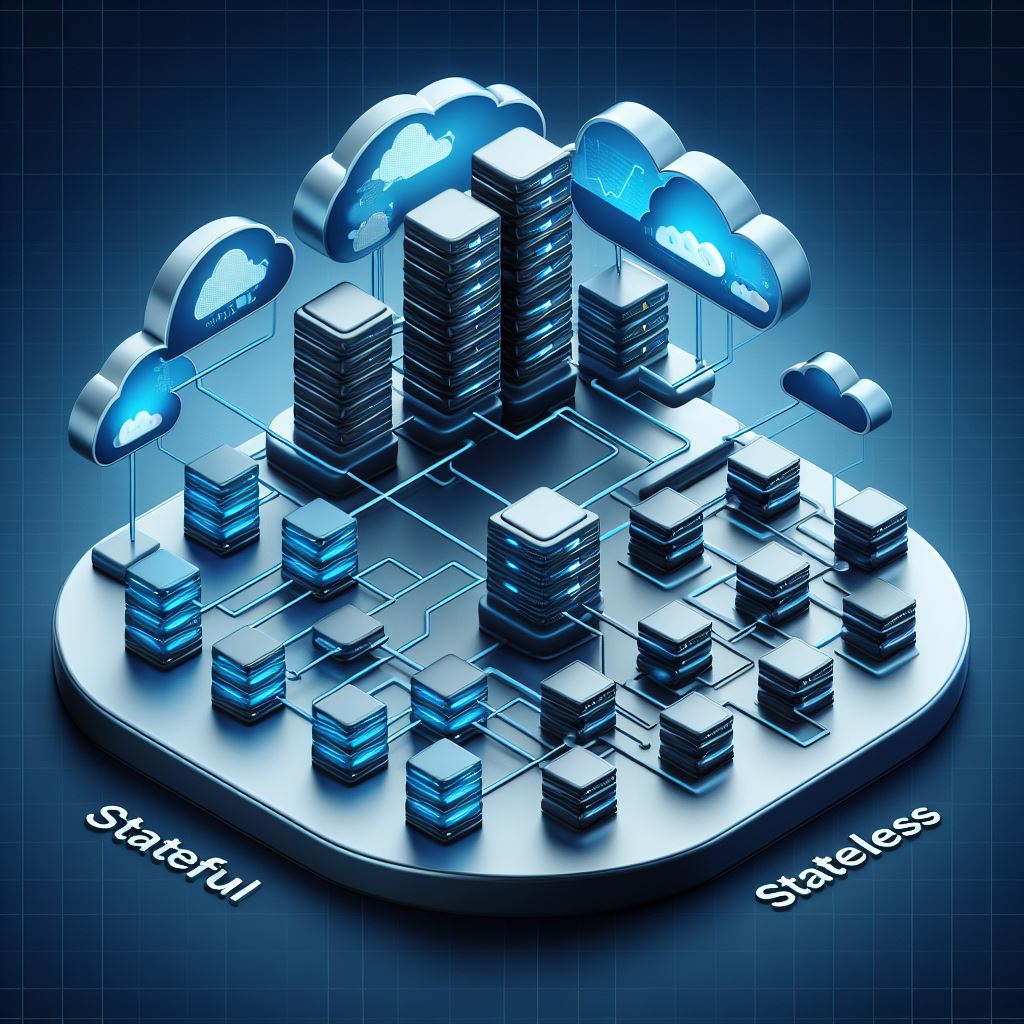Exploring Stateful vs. Stateless Paradigms
In the world of programming, things are constantly changing. Data flows in, calculations are made, and outputs are generated. But how does a program keep track of everything that’s happened? This is where state comes in.
State, in simple terms, is the memory of a program. It’s the information that tells the program where it is, what it’s done, and what it should do next. Like a light switch that can be “on” or “off,” state can be present or absent, influencing how the program behaves.
Now, programs can be categorized based on how they handle this state: stateful and stateless. Let’s delve into what these terms mean and explore some real-world examples.
Stateful Systems: Remembering Their Past
Imagine a shopping cart application. As you add items, the application remembers your selections (the state). This allows you to revisit your cart later and see exactly what you’ve chosen. This is the essence of a stateful system – it keeps track of past interactions to provide a continuous and personalized experience.
Here are some other examples of stateful systems:
- Social Media Platforms: When you scroll through your feed, the platform remembers your activity and preferences to suggest relevant content and maintain your session (who you’re logged in as).
- Virtual Machines (VMs): When you use a VM, the entire system – operating system, files, and configurations – is stored on a physical machine. Even when you power off the VM, its state is preserved for later use.
- Databases: The cornerstone of many applications, databases are inherently stateful. They store and manage data persistently, allowing you to retrieve and update information based on past entries.
Stateless Systems: Living in the Moment
Now, consider a weather forecast API. Every time you ask for the weather, it provides the current conditions based on your location, without needing to remember if you asked for it earlier. This is a stateless system – it treats each request independently, without relying on past interactions.
Here’s a glimpse into some common stateless systems:
- HTTP Requests: When a client sends an HTTP request to a server for a webpage or resource, the server processes it independently, treating each request as a new interaction. This means that the server doesn’t retain any information about previous requests from the same client. As a result, each request receives a fresh response, ensuring that the server’s response is not influenced by past interactions.
- Containers (without persistent storage): Containers are lightweight environments that run specific applications. By default, they are stateless – any data generated within the container disappears when it stops. This makes them ideal for running web servers that handle independent user requests.
- JWTs (JSON Web Tokens): These tokens are used for authentication. They contain information about the user but don’t store any state on the server. The server validates the JWT for each request but doesn’t rely on past interactions with that specific user.
- Function-as-a-Service (FaaS): Serverless platforms treat functions as stateless units triggered by events. This removes server management overhead and allows for rapid scaling based on demand.
Advantages and Failures of Stateful and Stateless Systems:
Stateful Systems:
Advantages:
- Improved User Experience: Stateful systems remember user interactions and preferences, leading to a more personalized and convenient experience (e.g., remembering items in a shopping cart).
- Efficient Resource Utilization: By storing state, they can avoid redundant data processing for repeated requests, improving performance (e.g., social media feed recommendations).
- Data Integrity and Consistency: Stateful systems inherently maintain session state, ensuring data is accurate and consistent across interactions (e.g., database transactions).
Failures:
- Complexity in Scalability: Scaling stateful systems can be challenging due to the need to synchronize state across multiple instances, potentially leading to scalability issues.
- Increased Resource Consumption: Storing and managing state requires additional resources, increasing the cost of infrastructure and maintenance.
Stateless Systems:
Advantages:
- Scalability: Stateless systems are easier to scale horizontally by adding more servers without worrying about complex state management (e.g., web servers handling independent user requests).
- Simplicity: Development and maintenance are simpler as there’s no need to manage state across requests (e.g., weather forecast API).
- Fault Tolerance: Stateless systems are more fault-tolerant. If a server fails, the system can recover quickly as no session data is lost (e.g., containerized applications).
Failures:
- Limited Personalization: Stateless systems may struggle to provide personalized experiences since they don’t retain user state between requests.
- Performance Overhead: Stateless systems may incur additional overhead, such as token validation or repeated data fetching, which can impact performance under heavy load.
In some scenarios, a hybrid approach presents an appealing solution. For instance, an e-commerce website could seamlessly blend both paradigms. It might utilize a stateless system for displaying product listings, ensuring scalability and responsiveness. However, when users add items to their carts or proceed to checkout, transitioning to a stateful system allows for maintaining session information and personalization.
By comprehending the nuances of state and its management styles, you empower yourself to make informed decisions during application development. Remember, the ultimate goal is to keep your programs running smoothly and efficiently, adapting to the dynamic needs of your users.
